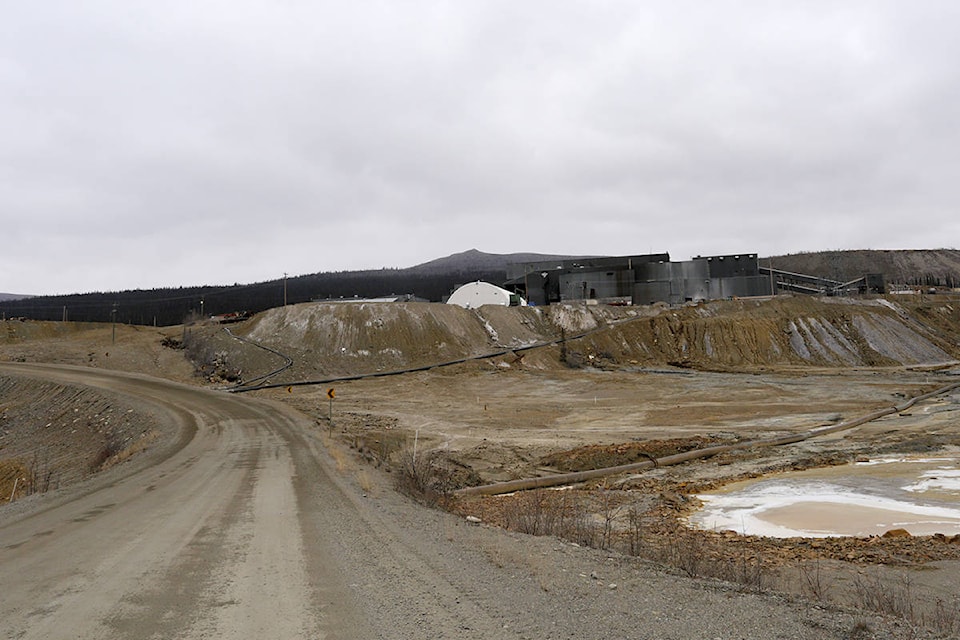Cleaning up the mess left behind by the former Faro mine could cost the federal government more than half a billion dollars on top of the $350 million it has already spent, federal officials say.
The latest numbers were part of a technical briefing on the megaproject hosted by both the territorial and federal governments.
The two sides are in the middle of a public consultation process before submitting a mine remediation plan to the Yukon Environmental and Socio-economic Assessment Board next year.
Lou Spagnuolo, Ottawa’s director of the Faro mine remediation project, said 2009 was the last time the government got an estimate for how much cleanup was going to cost.
The half-billion dollar estimate, which covers only the remediation process and not any of the work that has been done to date, has likely gone up since then, he said, if only because of inflation.
“It’s something we’re definitely cognizant of,” he said. “Being fiscally responsible is extremely important as we design the Faro project.”
After that there were be more costs. Officials admit that water at the mine site will likely need to be monitored forever. There’s no estimate yet for how much that is going to cost.
Once the largest open-pit lead-zinc mine in the world, the Faro mine was abandoned in 1998, leaving behind 70 million tonnes of tailings and 320 million tonnes of waste rock. That could potentially leach heavy metals and acid into the surrounding land and water.
What owners didn’t leave behind was money to pay for cleaning up the mess.
As of 2009 the federal government has been paying the territory to keep the water on the site clean, a phase known as “care and maintenance.”
Now, the focus is on the land. The goal is to submit documents to the assessment board next year and finish the assessment process in 2020. The plan is to get a water license in 2021 and construction on the site would start in 2022, Spagnuolo said.
“Roughly five years from today we’re hoping full construction will commence.”
Officials are expecting remediation of the land to take between 10 and 15 years, wrapping up sometime around 2036 or 2037.
Spagnuolo said planning remediation is slow in the beginning.
“The time it takes to get to 20 per cent designed takes a lot longer than … to get to the final closure,” he said.
“At the beginning it’s defining the problem and understanding the problem and doing the assessments to figure out where the issues are and where the issues might come up in the future.”
The biggest costs will likely be the various covers for the tailings and waste rock that will be staying on site, he said. Those are still being designed.
The government will also be upgrading some of the diversions that keep clean water away from the site. There’s also a new seepage collection system to be installed.
Staff will have to deal with high levels of zinc discovered seeping into the north fork of Rose Creek in 2014. That work is scheduled for 2018.
Around the same time they will expand one of the dams.
There’s also an issue with excess iron that has been seeping out near the toe of the main dam and changing the colour of the nearby water.
“It’s not considered large enough to be an urgent work, but it’s something that will be managed by the care-and-maintenance contractor.”
Some work is slated to happen on that issue this summer, but Spagnuolo said the plan isn’t complete yet.
He said the government has learned from Faro’s legacy.
Since 2003 new mines are required to have money set aside for cleanup and closure. That wasn’t the case for Faro. Spagnuolo estimates there was only “a couple million (dollars)” left after the mine’s assets were sold.
“It was a big lesson that the federal government has learned and hopefully we have improved upon that.”
Work on the site has provided a million hours of employment since the mine was abandoned, he said.
A community meeting to discuss the remediation plan is happening June 28 from 6-8 p.m. at Room A of the Coast High Country Inn in Whitehorse.
Contact Ashley Joannou at ashleyj@yukon-news.com
